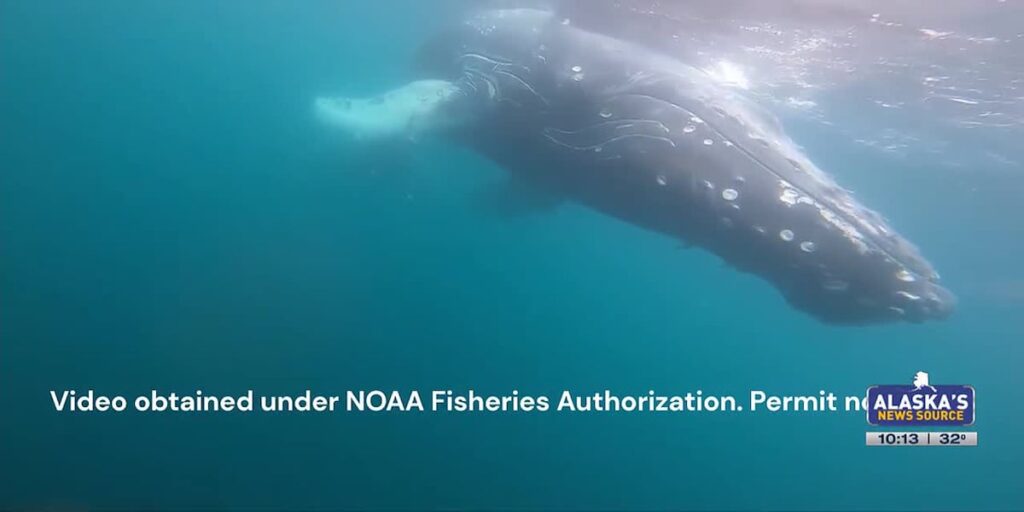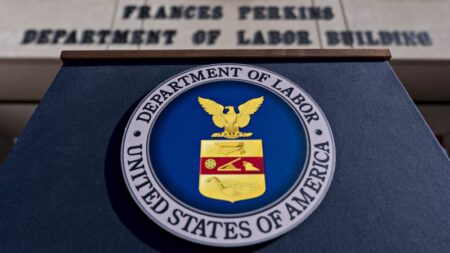ANCHORAGE, Alaska (KTUU) – At about 2 years old, the imperiled humpback whale could live another four decades in its Pacific Ocean home.
If only it could untangle itself.
Since at least Monday, a young male humpback had been awkwardly tied down with an unknown line in Iliuliuk Bay near the bustling fishing community of Dutch Harbor, located over 700 miles away from Anchorage in the Aleutians. Over the next few days, a rescue team of biologists, whale experts, Coast Guardsmen, Alaska State Troopers and many others banded together to free the roughly 30-foot marine mammal.
Late Friday morning, their efforts were successful.
“It was taking off out of the bay at 4 or 5 knots or so,” said Ethan Nichols, a biologist with the Alaska Department of Fish and Game, in an interview from Dutch Harbor on Friday afternoon. “Certainly looked happy to be free to me. Just a really good feeling to see it cruising out of the bay.”
Nichols and fellow biologist Asia Beder were two of the key players in Friday’s untangling. Aerial photos taken of the whale days earlier told them it was not going to be an easy job.
Investigation revealed the bound whale, who likely overwintered in Alaska, had a line across its mouth — officials described like a bridle on a horse — and wrapped around near his fluke.
On Friday morning, officials inserted a 30-foot pole with a “hook knife” into the water to snip away at the line near the mouth.
“What we had to our advantage here in this low visibility water and everything was a camera on the end of the pole behind that knife that we could live stream to either a pair of glasses or a monitor. So we could see that whale underwater, almost like surgeons, you know, staying safe, making those surgical cuts,” said Ed Lyman, an entanglement expert from the Hawaiian Islands Humpback Whale National Marine Sanctuary.
“And that played out very well. We made the one cut on the left side first. The animal did not free itself, so we made the second cut on the right side and at that point — eventually — it did unravel from the tail and start swimming off.”
Sadie Wright, a large whale entanglement coordinator with NOAA, said it was a good example of how the agency’s marine mammal stranding network works.
“We rely very heavily on volunteers and other whale experts to assist in reporting and response to entangled whales. And this incident this week was an excellent example of the program in action,” Wright said.
The word of the rescue is slowly getting out to the Dutch Harbor community, a region known for weather and seas that make water rescues challenging — and potentially dangerous.
“Our weather window was shutting down probably sometime tomorrow, right? So we were going to lose weather for a couple of days,” Lyman said.
After the line was successfully cut, it took the whale a little while to realize it could swim away.
“But once he started pumping his tail and realizing he had mobility he took off!” Wright said. “So we have high hopes that he’s going to be doing alright.”
Lyman had nothing but praise for the actions of the Dutch Harbor community.
“They were first responders and, boy, in the end, that played out very well,” he said. “And I think it usually does, it usually helps the animal more to be patient, stay safe, and take all these roles. And, you know, let the people that have the tools and experience do this. And a happy ending this time. So shout out to them.”
Copyright 2024 KTUU. All rights reserved.
Read the full article here











